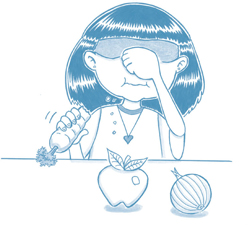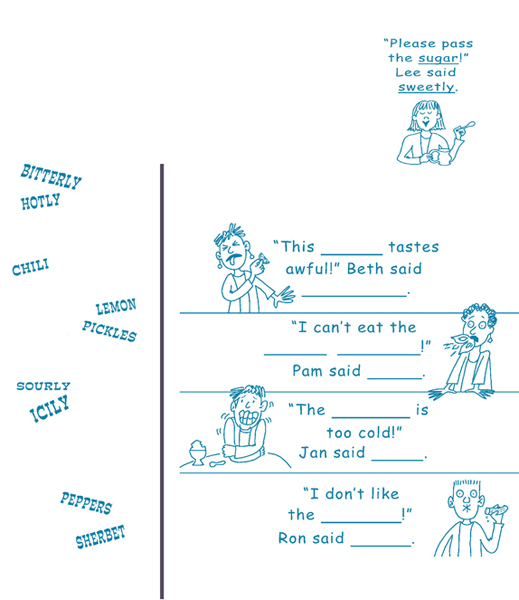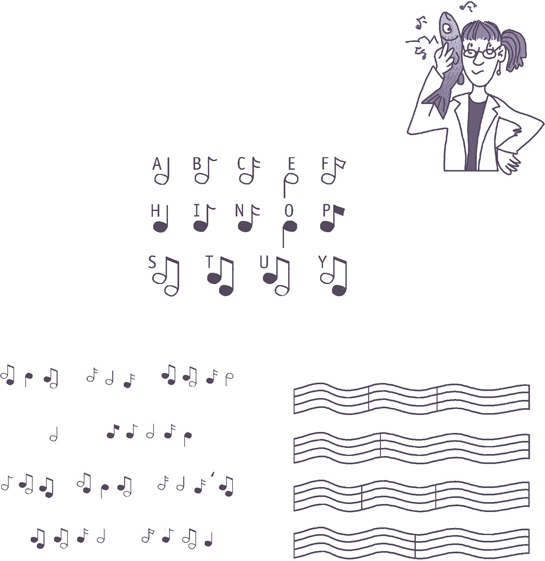Everything Kids' Magical Science Experiments Book (11 page)
Read Everything Kids' Magical Science Experiments Book Online
Authors: Tim Robinson
Tags: #epub, ebook


Baking soda, a leavening agent, helps cookies rise as they bake, and can also be used to clean up after the cookies are done baking.
When indicators, such as diluted grape juice, mix with acids, they tend to turn a reddish color, but when they mix with bases, they tend to turn blue or green. Mixing the liquids in the order you did allowed the grape juice to change first to a greenish color, and then back to a reddish color. Some fruits, such as lemons and oranges, contain an acid called citric acid, while other acids, such as vinegar, are commonly used in cooking. Bases such as ammonia are often used as cleaners and should be avoided by children. However, other bases, such as baking soda, are used to make cakes and cookies or to keep refrigerators smelling fresh. Remember that if you aren't sure what something is, you should never put it in your mouth to test it. Ask an adult what it is, or to help you set up a test with an acid-base indicator.
The Incredible Machine

M
ost people are aware of the amazing things the human body can do. Feats of strength, the ability for a cut or broken bone to heal itself, and the magic that turns energy in the food you eat into the energy you need to run, jump, and live. What you might not be as aware of, however, is that your body has some pretty interesting scientific abilities. These skills allow you to use your five senses to interact with the world around you in exciting and sometimes unexpected ways.
In this chapter, you will explore the human body and some of the ways it is different from the body of any other animal on the planet. You will turn your fingers into sausages, discover your magical voice, and put math and music together to produce magical sounds.

The human mouth has around 10,000 taste buds, but they are not all on the tongue. Some are under the tongue, some are on the cheeks, and some on the lips.
Question: Can you fool your taste buds?
- Blindfold
- Peanut butter, vanilla extract, or cinnamon
- A variety of foods, cut up into small pieces. Some possibilities are:â Appleâ Carrotâ Potatoâ Meat, such as ham, turkey, chicken, beef, or steakâ Onionâ Pear
- Cut up the foods you wish to test into small, bite-sized pieces.
- Arrange the foods on a plate.
- Rub either the peanut butter, vanilla, or cinnamon on your upper lip.
- Cover your eyes with the blindfold.
- Place each of the food items in your mouth, one at a time, and try to determine which food it is.
- If you have some friends handy, recruit one or more of them to try their hand at identifying the foods with one of the dis-tractor foods on their upper lip.

When you eat food, the taste buds on your tongue detect certain types of flavors. There The Incredible Machine are regions of your tongue that sense sweet tastes, such as sugary foods; sour tastes, such as lemon juice; salty tastes, such as potato chips; and bitter tastes, such as ground coffee. But there is more to tasting food than simply relying on your taste buds. Think back to the last time you had a severe cold. Chances are, your ability to taste food when your cold was at its worst was affected. You see, your nose also plays a role in tasting food. When you plug your nose, your brain is not able to process the tastes that come from your taste buds as well as when your nose is clear. So some foods with similar textures, such as apples and raw potatoes, will seem to taste the same when you plug your nose. But even with your nose unplugged, your ability to identify foods can be reduced by introducing strong alternate flavors, such as cinnamon or vanilla, around your mouth. These strong flavors drown out the flavors of the foods you are eating. Another key part of tasting foods is what you see with your eyes. For example, when you pick up a piece of chocolate and put it in your mouth you know what you expect as far as its taste. But if you cover your eyes so you can't see what you are eating, the expectation of what it will taste like is gone, and it becomes more difficult to tell what you are eating.

Want to learn how animals taste and use their other senses? To learn lots of interesting animal sense facts, visit:
www.indianchild.com/what_do_animals_see.htm.
Think about the types of foods that were easier to identify than others. What sort of characteristics do these foods have in common? Do you think certain people are better at tasting certain foods than others? If you are up for some research, look into the world of “supertasters.” These people tend to respond to certain flavors, bitter in particular, in intense ways, making it very difficult for them to enjoy foods with those flavors.
These scientists are eating lunch, but something is not right with the food! Use the words scattered around the page to fill in the blanks, and complete each scientist's complaint. The trick is to make the adjective and the food go together! (See the sample, right.)

Question: Can you draw a U.S. flag with yellow, black, and green markers?
- 3â³ Ã 5â³ lined note card
- Yellow, black, and green markers
- Blank sheet of white computer paper
- Place the note card so that its longer side lies horizontally.
- In the upper left corner of the note card, draw a rectangle that is 2 inches wide and about 1½ inches tall.
- Draw a horizontal line through the middle of the white space at the top of the card to produce thirteen lines on the card.
- Color 50 stars (or as many as you can fit) in the rectangular area you marked off with the black marker. Fill in the rest of the rectangle with yellow.
- Alternating black and green, fill in each line on the rest of the card.
- Stare at the drawing on the note card for at least 30 seconds.
- Look immediately at the blank sheet of computer paper until you see an image of the flag appear.

“The purpose of life, after all, is to live it, to taste experience to the utmost, to reach out eagerly and without fear for newer and richer experiences.”
â
Eleanor Roosevelt, former first lady

The rainbow patterns you can see when oil (or gasoline) floats on water are caused by light reflecting through different thicknesses of the oil. This is known as “thin-film interference.” This also happens when you blow bubbles and look at them on a sunny day.
This scientist has been experimenting with a piano and a fish. What did she discover? Use the note decoder to find out!

Your are able to see when your eyes respond to light rays that enter them. However, intense concentration on a certain color of light causes your eyes to tire. As a result, when you look away from that color, your eyes will see the opposite of that color in what is called an
afterimage.
In this activity, you tired your eyes out by staring at the green, black, and yellow colors. When you looked away at the white page, your eyes showed you the opposite colors in the flag, which are red, white, and blue.